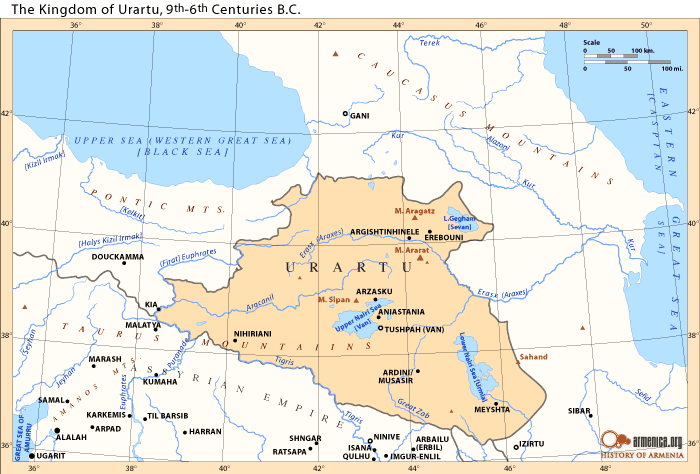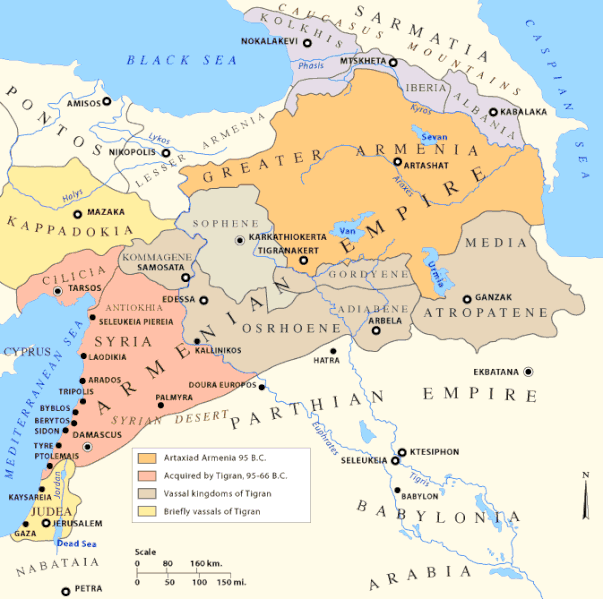




Hva som er urartu-hurriere, armenere, kurdere osv. er ikke lett å finne ut av. Det har pågått alle mulige slags blandinger opp gjennom tiden. Kanskje er det rett at Corduene kommer fra Gordiene, og dermed fra den frygiske kongen Gordias (Gord-i-as). Dette på samme måte som den frygiske kongen Midas, eller Mita, stammer fra Mitanni (Me-ta-ni).
“Kurd” er en utvikling av ordet “Gard” eller “Gord” fra utdød proto-iransk, som betyr “Soldat” eller “Vakt” eller “Kriger”. Kurderne ble gitt dette navnet fordi de er et krigerfolk og var kjent disse egenskapene. I dag finnes fortsatt ordet “Guard” på engelsk og “Gard” i germanske og skandinaviske språk. Det betyr fortsatt “Vakt”, “Kriger” eller “Soldat”. Mange nordmenn heter også “Gard” til fornavn – samme som “Kurd”.
Og så, med tiden og innflytelse fra nye folk, som araberne, endret “G” seg til “K”, fordi “G” ikke finnes på arabisk. En vokallyd – som O eller U – er uansett ikke avgjørende for betydningen av et ord og avhenger av hvem som uttaler det. Et eksempel: skiftet mellom “a” på persisk og “o” på dari er like regelmessig som natt og dag.
The Kingdom of Gordyene emerged from the declining Seleucid Empire and for most of its history, it was a province of the Roman Empire and acknowledged the sovereignty of Rome. From 189 to 90 BC it enjoyed a period of independence. Its area was much smaller than what is now called Kurdistan, and was mainly concentrated in the south of Lake Van and around Diyarbakir.
Ancient Corduene, identified as Kurdistan in some sources was twice incorporated into the Kingdom of Armenia. The first period was in the first century BC from 90 to 66 AD as a vassal kingdom of Armenia. Corduene was then incorporated in the Roman Republic and remained in Roman hands for more than four centuries. In the late fourth century AD, it became a part of Armenia for the second time (in 384) and remained as such until 428 AD.
It is described as a small vassal state between Armenia and Persia in the mountainous area south of Lake Van in modern Turkey. The three principalities of Corduene, Moxoene, and Zabdicene are referred to as Carduchian dynasties by Toumanoff. The region seemed never to have been a unified one in most parts of its history even in periods of independence. Moxoene was a province of old Armenia, today in Van province, Turkey. It was governed by Armenian princes.
The Urartians, specifically to their archaeology. They had possession of northern (if not the greater portion) of Corduene. On linguistic grounds the region would have been Hurrian, as the Urartians spoke a Hurrian-related language. Northern Corduene was known as Khubushkia, a Nairi land, and its capital of the same name was known as the capital of the Nairi. Urartu likewise was a Nairi land, and its ruler styled himself “King of Nairi”. The people of Gorduene were known to have worshipped the Hurrian sky God Teshub.
19th-century scholars, such as George Rawlinson, identified Corduene and Carduchi with the modern Kurds, considering that Carduchi was the ancient lexical equivalent of “Kurdistan”. This view is supported by some recent academic sources which have considered Corduene as proto-Kurdish or as equivalent to modern-day Kurdistan.
There were numerous forms of this name, partly due to the difficulty of representing kh in Latin. The spelling Karduchoi is itself probably borrowed from Armenian, since the termination -choi represents the Armenian language plural suffix -kh. It is speculated that Carduchi spoke an Old Iranian language.
Armenians referred to the inhabitants of Corduene as Korduk’. This name found its way into Greek documents and Xenophon used the Hellenized form of the name, Karduchoi. According to Strabo, the region of Corduene (“Gordyaean Mts.”) referred to the mountains between Diyarbakir and Mush. It is argued that Greeks learned this term (Karduchoi) from Armenians, since the termination -χoι represents the Armenian plural in -k’.
The Turkish government has been building numerous dams in the southeast since the 1980′s. This is to meant bring agriculture and improve the economy of the area. Some of the ancient sites (already discovered or yet to be discovered) have and may become flooded.
Kingdom of Armenia (antiquity)
Filed under: Uncategorized
